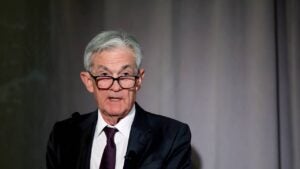What was the LIBOR rate, and what happened to it?




Key takeaways
- LIBOR set interest rates for trillions of dollars in loans for over 30 years.
- Banks manipulated the rate because it relied on estimates rather than real transactions.
- A new system called SOFR replaced LIBOR in 2023, using actual market data.
- The change affects some mortgages and loans but makes the financial system safer.
LIBOR once served as the foundation of global lending, affecting everything from credit cards to corporate loans. For over 30 years, these benchmark interest rates determined borrowing costs for consumers and businesses worldwide. In 2023, regulators finally ended this system after uncovering widespread manipulation that cost borrowers billions.
Behind the technical name — the London Interbank Offered Rate — stood a simple idea. Every morning, major banks in London would report their estimated borrowing costs, creating rates that rippled through the global financial system. Those daily numbers shaped interest rates on trillions of dollars in mortgages, student loans and business deals.
What was LIBOR?
The London Interbank Offered Rate reflected how much banks paid to borrow from each other. Each business day until June 2023, major institutions like JPMorgan and Barclays submitted estimates across multiple currencies and time periods. Banks sent their numbers by 11 a.m. London time, reporting rates for everything from overnight loans to year-long borrowing in dollars, pounds and euros.
To calculate the daily rate, the British Bankers’ Association collected these submissions and stripped out the highest and lowest estimates. Averaging the middle rates produced LIBOR — the benchmark that drove lending costs worldwide.
Since banks borrowed without collateral, these unsecured loans made LIBOR especially sensitive to market stress and bank creditworthiness. The calculation process remained consistent over decades. This produced the daily LIBOR rate that determined lending costs across the global financial system.
What was LIBOR used for?
LIBOR’s influence stretched far beyond London’s banking center, from local mortgage payments to global financial markets. When homeowners signed adjustable-rate mortgages, their monthly payments often followed a formula of LIBOR plus 2 to 3 percent. Throughout the financial system, LIBOR set the foundation for variable-rate student loans, while credit card companies used it to adjust their APRs.
In corporate finance, LIBOR shaped how businesses funded their operations. Large companies accessed credit through facilities that priced loans at LIBOR plus a margin, with that extra percentage tied to their credit rating. Cities and states across America relied heavily on LIBOR, too, issuing billions in floating-rate municipal bonds linked to these benchmark rates.
The derivatives market built massive trading volumes around LIBOR. Interest rate swaps worth trillions used LIBOR as their foundation rate. Investment banks created structured products for pension funds and insurers using complex combinations of LIBOR-based derivatives. By 2021, financial contracts worth over $265 trillion referenced LIBOR rates worldwide.
The banking sector embedded LIBOR deeply into risk management systems. Treasury departments used LIBOR curves to value assets and set internal borrowing costs. Risk models relied on historical LIBOR data to estimate future market movements. Trading desks built automated systems around LIBOR-based pricing.
How was LIBOR manipulated?
The rate-setting process created perfect conditions for abuse. Major banks submitted their estimated borrowing rates daily without providing evidence to back up their numbers. During the 2008 financial crisis, trading between banks nearly stopped — leaving even less data to verify these submissions.
Traders at several banks discovered they could influence these daily rate submissions. Internal messages revealed systematic coordination between trading desks and rate submitters. By nudging rates slightly up or down, banks generated millions in trading profits while affecting interest rates on consumer loans worldwide.
Regulatory investigations uncovered widespread manipulation between 2005 and 2012. Barclays paid the first major fine of $350 million in 2012 after regulators found traders regularly pressured rate submitters. Deutsche Bank later paid $2.5 billion for its role in the scheme.
By 2016, investigations revealed systematic rate rigging at nearly every major bank involved in setting LIBOR, and regulators had collected over $9 billion in fines from nine major banks. Criminal charges hit dozens of traders involved in the scheme.
Britain’s Financial Conduct Authority finally announced LIBOR’s end in 2017. The decision came after years of failed attempts to reform the rate-setting process. Banks had until 2023 to transition away from LIBOR, giving markets time to adopt new benchmark rates backed by actual transaction data.
What replaced LIBOR?
The Federal Reserve developed the Secured Overnight Financing Rate (SOFR) to succeed LIBOR in the U.S. market starting in 2017. While LIBOR relied on bank estimates, SOFR tracks actual lending rates in the Treasury repurchase market — where banks and investors borrow using U.S. government securities as collateral.
This shift fundamentally changes how benchmark rates work:
- SOFR uses real market transactions instead of estimates.
- The rate comes from a broader pool of financial institutions, not just major banks.
- Daily volume in the SOFR market exceeds $1 trillion, making it harder to manipulate.
- The Fed oversees the rate directly, providing stronger regulatory oversight.
SOFR vs. LIBOR
SOFR pulls data from the Treasury repurchase market where banks lend and borrow over $1 trillion daily using government securities as collateral. Unlike LIBOR’s estimation system, the massive trading volume creates a deep pool of actual transaction data.
Banks can’t game SOFR rates because it tracks completed trades. The Federal Reserve calculates the rate each day using verified market transactions rather than submitted estimates. This operational change affects everything from credit cards to corporate loans.
Several major differences emerged during the transition. SOFR rates typically run lower than LIBOR since they’re backed by Treasury securities. Daily rate movements show less volatility because they reflect real market activity.
Most importantly, the broader scope of transactions — involving thousands of market participants rather than just a few major banks — makes manipulation virtually impossible.
How did the market handle the LIBOR transition?
Derivatives markets felt the biggest shock from LIBOR’s end. Interest rate swaps worth hundreds of trillions needed updating. The Chicago Mercantile Exchange switched trillions in futures contracts to SOFR in 2023, while major banks spent millions of dollars updating systems and documentation.
Hedge funds and asset managers faced unexpected challenges. Many trading strategies relied on LIBOR’s predictable movements during market stress — forcing traders to revise decades-old models.
Does the LIBOR change affect you?
Most consumers already transitioned from LIBOR without realizing it. Financial institutions started converting adjustable-rate mortgages and student loans to SOFR in 2021. Lenders handled these changes automatically, updating loan terms to reference the new benchmark rate.
The real impact shows up in future borrowing. New adjustable-rate loans use SOFR’s more stable pricing system. Credit cards, personal loans and mortgages now adjust based on actual market transactions rather than bank estimates. While borrowers won’t see dramatic changes in their rates, the underlying system provides better protection against manipulation.
Business owners and commercial borrowers face bigger adjustments. Corporate credit lines and business loans used LIBOR for decades. Many companies needed to review and update their loan documentation, particularly for complex financial products such as interest rate swaps or derivatives.
The bottom line
The end of LIBOR closed a troubled chapter in banking history. What started as a simple system for banks to set lending rates became vulnerable to widespread manipulation, affecting trillions in consumer and business loans. SOFR’s transaction-based approach eliminates these risks by tracking real market activity.
For most borrowers, the transition happened seamlessly behind the scenes. The most important change isn’t in monthly payments but in market stability — rates now reflect actual lending costs rather than estimates. While SOFR operates differently than LIBOR, it provides something the old system couldn’t: reliable benchmarks based on verifiable data.
Understanding these changes matters for anyone considering new loans or managing existing debt. Smart borrowers should review their loan terms, confirm their current benchmark rate and track market conditions affecting their interest costs. The financial system emerged stronger from this shift, even if individual borrowers barely noticed the change.
Frequently asked questions
You may also like

Biggest winners and losers from the Fed’s latest meeting

How does the prime interest rate affect you?


